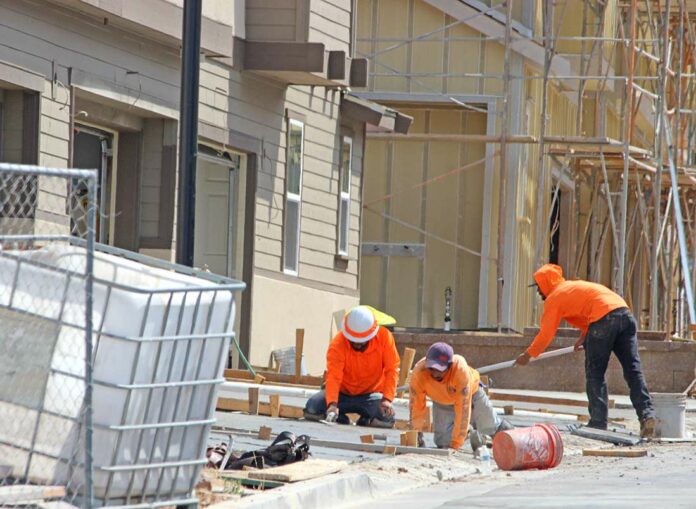A Jan. 27 letter from the state warned that the City of Gilroy could be forced to approve housing projects that may not comply with its zoning code.
That’s because the city’s housing element, a document that describes the city’s housing goals and programs for the next eight years, needs a host of revisions before the California Department of Housing and Community Development considers it up to snuff.
The “builder’s remedy,” as it is referred to, stems from the state housing law, which has been strengthened in recent years to require jurisdictions to build more housing to combat the chronic shortage of units.
In cities that do not have a compliant housing element, developers could pull the builder’s remedy card and gain approval for a housing project with at least 20% of the units designated for people with lower incomes, overstepping any local zoning in place.
Gilroy is far from alone in this situation, according to City Attorney Andy Faber, saying that no city in Santa Clara County has received approval from the HCD on their housing elements.
The Town of Los Gatos, Faber noted as an example, was one of the very few jurisdictions in the Bay Area to approve its housing element without receiving the OK from the state. The City of Morgan Hill did the same on Jan. 24.
“We are in the boat with many other cities at this point,” he said.
Cities are required to update their housing elements every eight years, which are part of their general plans. The most recent document, covering years 2023-2031, was due on Jan. 31.
The long-term planning document lays out how the city will facilitate the building of at least 1,773 new residential units that are needed in Gilroy from now through 2031, as determined by the state’s Regional Housing Needs Allocation process.
In October 2022, the city submitted its draft document to the state for review, after more than a year of public meetings and deliberations. However, it received a letter on Jan. 27 from Paul McDougall of the HCD, stating it needs to dive deeper in various aspects of its housing policies.
Among the issues, McDougall wrote in the 13-page letter that the city needs to do further analysis on many categories, identifying more than 30 areas that need more work to be in compliance.
The letter stated that the city did not conduct a “complete site analysis” for housing, while it must include details of a program that assists in the development of lower-income housing.
Faber said the city’s consultants who drew up the housing element will meet with HCD officials soon to hash out the revisions. The plan will then be brought back to the planning commission and council, likely in March or April, for further review before it is sent to the state again for its consideration.
“Our belief is that Gilroy is not regarded by the HCD as a problem child,” Faber said. “There are cities that actively fight with the HCD. We’re not doing that. We’re trying to comply, and we expect that we will.”
Housing advocates file lawsuits against Bay Area cities
Faber said Gilroy was twice sued in the early 2000s over its housing element, and won the battle in court both times.
“That probably can’t happen now, because state law has given HCD additional powers,” he said.
Affordable housing advocates have filed a bevy of lawsuits against cities in the Bay Area, alleging that each failed to meet a statutory deadline of Jan. 31 for revising its local housing plan to accommodate its share of regional housing needs.
Suits were filed in county courts against a dozen Bay Area cities, including Burlingame, Palo Alto, Cupertino, Martinez, Belvedere, Richmond and Novato.
Sonja Trauss, executive director of YIMBY Law, a plaintiff in a number of the cases, said in a statement, “There’s no excuse for these cities to be in violation of state law. Cities have had years to plan for this … These cities are trying to push the responsibility onto other communities and avoid having to welcome new neighbors. It’s time for them to be held accountable.”
The lawsuits seek court orders compelling each of the cities to revise the housing element in its general plan as required by state law, and declaring that each non-compliant city will suffer a statutory penalty that will make it harder for it to exclude housing by relying on local zoning rules.
The housing element is a crucial part of an intricate state-local statutory scheme for anticipating and providing for the housing needs of a region. In the Bay Area, with its chronic shortfall of affordable housing, the scheme is essential to widely sharing the burden of accommodating more housing.
Land use matters, such as zoning and construction codes, are primarily local issues. However, in California the housing needs of a region, particularly the need for affordable housing, are determined on a regional basis and then implemented in a coordinated way by municipalities throughout the region.
A central player in the process is the California Department of Housing and Community Development, which determines the housing need allocation for a region.
Once the regional need is determined, the regional council of governments—in the Bay Area, the Association of Bay Area Governments, a governmental organization that includes nine counties and more than 100 cities—allocates the overall need among its member governments.
Each of the local governments then must update the housing element in its general plan to provide for its allocated share of needed housing.
The housing element, as revised, has to identify enough land that is zoned to accommodate the need. If the zoned capacity isn’t enough to meet the share, the municipality has to rezone enough land to meet the need.
In this way, the housing need is allocated regionwide and the affected municipalities make possible its implementation by facilitating any needed zoning changes to accommodate the expected development.
Actual development falls largely to private developers, but by making sure there is enough zoned capacity, the housing element facilitates projects being successfully sited and built.
But what happens if one or more of the local governments fails to meet its deadline for revising its housing element?
The statute attempts to make that an unattractive option by empowering any interested party to sue a non-compliant city and obtain an order requiring the municipality to revise its housing element. The plaintiff can also recover its cost of suit and reasonable attorney fees.
To put more teeth in the remedy, the statute also contains a penalty provision designed to usurp the local zoning prerogatives of a non-compliant city.
To that end, the statute says that a non-compliant city is barred from disapproving housing developments that meet certain criteria for affordability, even if they would otherwise violate the local zoning code. This section, sometimes called the builder’s remedy, allows projects to proceed that might otherwise be barred under the local zoning laws.
Should a developer take advantage of the remedy, a new project that would otherwise be impossible under local zoning rules might have clear sailing to move ahead.
City of Gilroy spokesperson Rachelle Bedell said the city has not received any applications from developers that would fall under the builder’s remedy.
The plaintiffs in the newly filed cases are housing advocacy organizations.
To light a fire under non-compliant cities, the suits ask the various state courts to “declare” that each defendant city is subject to the builder’s remedy. How that will play out is unclear, but seems certain to generate more litigation.
Moreover, the dozen suits that have been filed to date are likely not all that are to come. Reportedly, many more Bay Area cities failed to meet the statutory deadline.
According to a statement by the plaintiffs, “The initial lawsuits focus on cities with a long history of exclusionary housing practices, cities that adopted housing elements unlawfully, and localities that have made little progress in developing their draft housing elements. The organizations will continue to file suits in the coming weeks, prioritizing cities with the most egregious violations.”
Joe Dworetzky of Bay City News contributed to this report.
Copyright © 2023 Bay City News, Inc.















